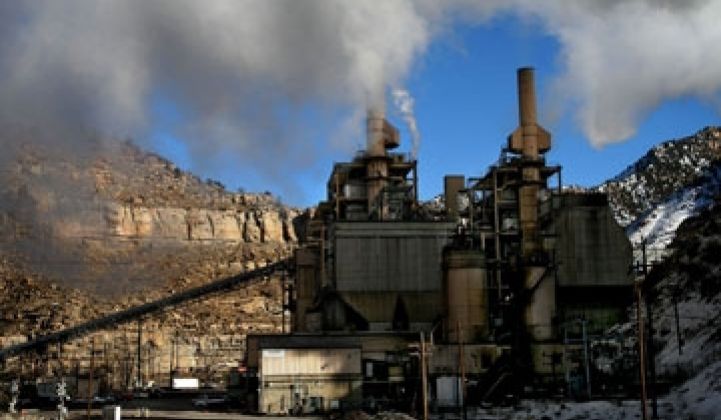Duke Energy is disentangling itself from a problematic relationship with an industry group promoting clean coal technology, citing differences over the carbon cap-and-trade legislation now before Congress.
In the meantime, Duke and other utilities are struggling with the on-the-ground implications of trying to capture and store the carbon that comes from their smokestacks.
Charlotte, N.C.-based Duke announced it was leaving the American Coalition for Clean Coal Electricity on Tuesday, the National Journal reported. The move was largely seen as politically motivated, as ACCCE has been embroiled in a scandal after one of its lobbyists got caught forging letters of support from groups unconnected to the organization (see New York Times).
Duke, on the other hand, cited its support for climate legislation passed by the House in May and now up for debate in the Senate as a reason for leaving ACCCE (see Energy-Climate Bill Could Boost Electricity Costs 20% by 2030). Similar concerns prompted Duke to abandon membership in the National Association of Manufacturers earlier this year.
The American Clean Energy and Security Act of 2009, in its present form, would reduce the nation's greenhouse-gas emissions by 17 percent by 2020 and by about 80 percent by 2050. Coal-fired power plants make up half the nation's carbon emissions, making them integral to such far-reaching goals.
In the meantime, Duke has been making some well-publicized moves on clean coal technology, with projects in the United States and a partnership with one of China's biggest coal-fired electricity generators (see Duke Energy, China's Huaneng Group Collaborate on Coal Carbon Capture).
But as Duke's piecemeal approach to the challenge indicates, there's a long way to go from today's technologies to a cost-effective way to capture and store carbon at the levels climate legislation would require.
For example, the 630-megawatt integrated gasification combined cycle (IGCC) coal plant Duke is building in Edwardsport, Ind., will turn coal into a synthetic gas before it's burned, cutting down on its overall emissions of mercury and sulfur dioxide – but not carbon dioxide.
So Duke intends to spend $17 million to find ways to capture that carbon dioxide stream. Still, that's the cheaper of the two challenges – Duke is also asking the state's utility regulators to approve a $121 million research project to find ways to pump captured CO2 into underground caverns at the site.
Duke's East Bend Generating Station in Kentucky is also a candidate for a similar research project – the state is famous for its caves, after all. Underground storage is seen as the cheapest and largest-scale opportunity for carbon storage.
Beyond underground storage, which is limited by existing caverns, oil fields or other available storage space, the challenges to large-scale carbon storage remain daunting, to say the least.
While captured carbon could be turned into stable minerals, dumped into the deep ocean to hold steady for a few hundred years, or fed to algae and other plants, such ideas are still in the research phase (see Carbon Capture: Possible Solutions, Part III).
To help the industry along, the Department of Energy is looking to give out about $1.4 billion in stimulus grants under its Clean Coal Power Initiative.
Utilities have been quick to ask for money. Among the applications so far, NRG is seeking a grant to try Fluor Corp.'s technology to capture 90 percent of the carbon dioxide coming from a plant near Houston.
As for capturing and also storing the carbon, Southern Co. is seeking money for a project at its Kemper County, Miss. coal plant, and American Electric Power Co. is seeking $334 million for its New Haven, W.Va. plant, Bloomberg reports.
The DOE has also revived the FutureGen Alliance, a big, multi-utility carbon capture project that the Bush Administration canceled in 2007 on cost overrun concerns (see DOE Gives Go Ahead for FutureGen to Be in Illinois).
In the meantime, Duke would appear to be hedging its bets when it comes to clean coal versus another low-emission, massive-scale power source – nuclear power. Duke CEO Jim Rogers has publicly questioned the near-term viability of clean-coal technologies available and hinted that nuclear power might be the better option (see Green Light post).
But that wouldn't be unusual, when it comes to big energy companies or their affiliations to policies that may be seen to clash at times. General Electric is a member of ACCCE as well as the U.S. Climate Action Partnership, a group whose recommendations make up a good part of the climate bill, the National Journal reports. (Duke is also a member of the USCAP).
Similarly, Siemens, ConocoPhillips and BP share memberships in the USCAP as well as the American Petroleum Institute, a trade group that is working up opposition to the climate bill (see Green Light post).



